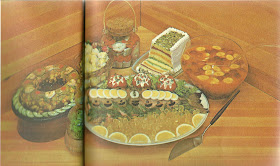In 1979, to prove you were cool in school, you had to be
able to recite the McSlogan:
Twoallbeefpattiesspecialsaucelettucecheesepicklesonionsonasesameseedbun. It was
pretty genius as slogans go, forcing the ingredients list into one’s memory in
a super mnemonic jingle that required a deep breath and much practice to say. I
have a hunch that a lot of folks over 40 can still recite it at a moment’s
notice today.
Fast food nostalgia, like most rosy-spectacled memories,
usually brings back fun times, packaged in a great deal of horror. It wasn’t
the fact that the fries were fried in pure beef tallow or that the cattle
slaughtered en mass to produce patties were being farmed on razed rainforest
land — it was the packaging itself that speaks most vividly to an earlier age.
What happened to all those polystyrene clamshell boxes our
burgers came in? They’re still with us. Mostly buried in anaerobic landfills
where their decay isn’t scheduled to begin for 500 years (if it ever does), or
floating on the world’s oceans because it is light enough to be shifted by the wind
and won’t sink.
The things that make fast food fast as also the things that
make our life short. From the styrenes in the packaging to the trans-fats that
replaced the beef tallow, to the antibiotics and hormones in the patties, to
the genetically modified fries (Mickey D’s was the largest consumer of Monsanto’s
NewLeaf, the potato classified by the FDA as a pesticide rather than a food) —
the convenience of a drive-thru meal only delays its real cost.
The humor behind the slogan is that you can’t even pause to
break between words: the emphasis is on speed. Eating the same way — wolfing
your meal down — is not how humans best eat.
Contemplate. Masticate. Enunciate.














































